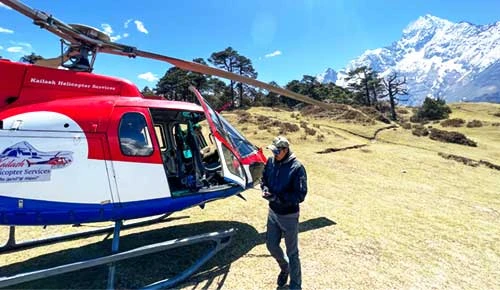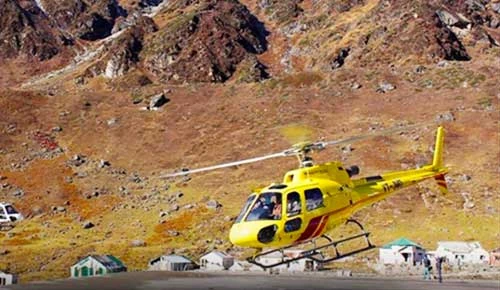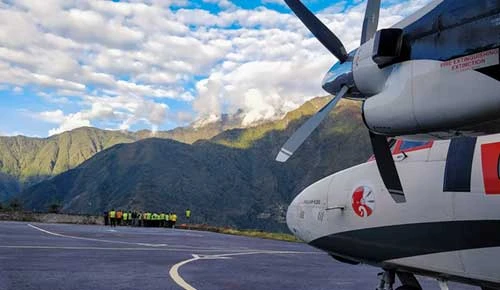Altitude Sickness in the Himalayas While Trekking in Nepal: Symptoms & Treatment
Travelers who seek adventure naturally feel the need to overcome any obstacles they come across or desire to confront head-on.
Even while we have the ability to prove all the statistics wrong, and there are moments when your body defies every scientific theory, it is wise to be aware of the risks and worst-case scenarios associated with our daring adventures. Another piece of advice is to not assume that just because you didn't have anything on your first run, you won't have it on your higher final trip. The proverb "prevention is better than cure" holds true in the mountains.
While trekking or mountaineering adventure, you must be aware of acute mountain sickness going into high altitude zones. We cannot point out precisely exactly what type of person certainly suffers from this, but the signs and symptoms are there when ascending the great Himalayas peaks, Andes, or any high-altitude mountains in Nepal.
This post will cover the science behind it and some of the suggestions that have been developed so far to overcome altitude sickness. In fairness, even mountain climbers who have climbed Everest 10+ times suffer from the symptoms, they are just better at dealing with it.
There is no escaping and it is normal to feel its effect but it is very important to follow the precautions and guidelines to be safe, enjoy and complete your adventure. There is no way to avoid it, and it is normal to experience its effects, but it is crucial to follow the safety precautions and rules to enjoy and finish your journey.
Altitude sickness is more likely to seen in trekkers at high altitude himlayan treks like Everest base camp, Annapurna Circuit Trek, Manaslu Circuit.
Table of Contents
What is Altitude Sickness?
Altitude sickness in Himalayas is one of several symptoms that are only seen at high elevations. The milder version of acute mountain sickness is altitude sickness. Despite being modest, it is still a harmful side effect and is caused by rapid exposure to low oxygen at high elevations. Most cases of altitude sickness occur above 2,500 meters (8,000 feet), however, some people experience symptoms at lower altitudes.
If you ascend gently, you can usually avoid getting altitude sickness, which typically follows a quick ascent. In the majority of these situations, symptoms are temporary and normally go away as the body gets used. However, altitude sickness can be fatal in several situations.
Depending on the elevation, high altitude sickness can be categorized as follows:
High Altitude (1,500–3,500 meters)
The physiological implications of lower inspiratory oxygen pressure begin to appear at high altitudes (1,500–3,500 meters), and these effects include decreased performing ability and increased breathing.
The arterial oxygen saturation (SaO2) often remains above 90%, even if there may be a minor impairment in arterial oxygen delivery. Between 2,400 and 4,000 meters, many ascend quickly, increasing the risk of altitude sickness.
Very high Altitude (3,500 to 5,500 meters)
The arterial PO2 drops below 60 mmHg at very high elevations (3,500 to 5,500 meters), causing the maximum oxygen saturation to fall below 90%.
Extreme hypoxemia might happen while performing, sleeping off, or having acute lung problems like high-altitude pulmonary edema. This range is where severe altitude disease most frequently occurs.
Extreme Altitude Above 5,500 meters
Above 5,500 meters, extreme elevations are characterized by severe hypoxemia, hypocapnia, and alkalosis. Acclimatization is eventually outpaced by the progressive decline of physiological function.
There is no permanent human habitation above 6,000 meters as a result. Acclimatization. is required when ascending to an altitude; a sudden ascent without supplemental oxygen for anything longer than short exposure risks severe altitude sickness.
Types of Altitude Sickness
1. Acute mountain sickness (2500 M+):
The most prevalent and mildest kind of mountain sickness is acute mountain sickness. The symptoms, which include nausea, headaches, and dizziness, can mimic those of a hangover.
2. High Altitude Pulmonary Edema (HAPE, 3200 M+)
A buildup of fluid in the lungs known as high-altitude pulmonary edema can be extremely harmful and even fatal.
3. High Altitude Cerebral Edema (HACE 4300 M+)
The most severe kind of altitude sickness, high altitude cerebral edema, occurs when there is fluid in the brain. You must immediately seek medical assistance because it is a life-threatening situation.
Symptoms of Altitude Sickness
Initial or Typical Symptoms
Altitude sickness is mostly characterized by headaches, which may be accompanied by one or more of the symptoms listed below:
- Headache(with or without dizziness or lightheadedness)
- appetite loss
- Increased flatulence,
- Fatigue or Weakness
- Sleep deprivation
- Shortness of breathing
- continuous raid pulse rate
- swelling of hands, feet, and face(Peripheral edema)
Severe Symptoms
The main symptoms of life-threatening altitude sickness include:
High Altitude Pulmonary Edema (fluid in the lungs)
- Similar to bronchitis symptoms
- Chronic dry cough
- Fever
- Breathing difficulties even when at rest
High Altitude Cerebral Edema (swelling of the brain)
- Unresponsive to analgesics headache
- Unstable gait
- Increasing unconsciousness
- Higher levels of nausea and vomiting
- Retinal hemorrhage
If you see any of these symptoms, try not to panic. Remember that your body can conquer and adapt to new surroundings as you follow the instructions from the guides.
Also, take your time with your itineraries; longer days are intended to help your body adjust to the high altitudes, so don't skip your acclimatization day.
For your body to adjust to the environment, it is typically placed to ascend to 300-500 meters during your days of rest. So that your body adjusts and produces more red blood cells in your blood, which helps your body and brain use the oxygen in your body more effectively.
Prevention for Altitude Sickness
- The easiest approach to avoid altitude sickness is to ascend slowly.
- In the first 24 hours at a high altitude, avoiding strenuous activities like skiing, trekking, etc. may lessen AMS symptoms.
- Sleeping medications and alcohol are both respiratory depressants that should be avoided.
- Drink enough water. (3 to 4 liters) every day.
- Don't overwork your body and stay away from strenuous activities.
- Slowly and comfortably trek. (It's not a race; you want to get through the task, but knowing your body and mind is crucial; keep your ego in control.)
- Acclimatization day is crucial; stop and take a break as often as you can.
- Chocolate or energy snacks can be useful.
- Drink hot tea or water every night before bed.
- There is a natural ease when you allow your body to accept what you are feeling rather than fighting it, so if you are sick, let your body get sick and get some rest.
- Use the "climb-high, sleep-low" strategy.
Treatment of Altitude Sickness
- Drop the height right away; we advise between 500 and 1000 meters.
- Take oxygen in bottles (Normally for mountaineering or in an extreme case)
- Use medicine (all our guides will be carrying first aid kits )
- When tested on climbers ascending Everest, paracetamol (acetaminophen) also proved to be just as effective as ibuprofen for treating altitude sickness.
- Control your breathing and pay attention to your heartbeat.
As recommended by the locals, some local remedies for altitude sickness are:
- While hiking in the Himalayas, the best foods are garlic soups. The natural blood-thinning effects of garlic contribute to improved circulation.
- Potato wedges with spicy Nepalese pickle (a local ingredient) will relieve headaches if you can handle the flavor of spice.
- Try to prevent falling asleep during the day, fight through the discomfort, and drink warm water or Jasmine tea.
- Although it rhymes, Dal Bhat power 24 hours offers advantages. You can climb Nepal's slopes with the strength and energy provided by carbohydrates.
And finally, when you stop for the night, check the oxygen level in your body. Each of our local guides will be equipped with a set of fingertip oxygen level checkers to ensure that your body is acquiring the right amount of oxygen. They will give you advice on how to recover and the extra care you need based on the oxygen level and their experience.
Note: Having the appropriate insurance (including repatriation and helicopter rescue) is essential. In Nepal, helicopter rescue is quite successful. To ensure that rescue is delivered right away when needed, you must give your operators all of your insurance information (including the emergency hotline).To learn more about travel insurance Visit our blog by clicking here.








